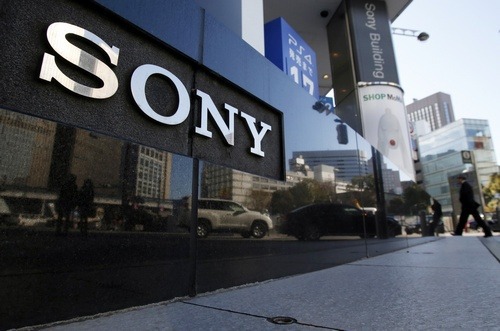The Marketing mix of Sony analyses the 4Ps of Sony, including Product, Price, Place, and Promotions. We are aware that Sony is one of the most sought-after and leading manufacturers of communication, gaming consoles, informational technology products, electronics, and video for personal selling professional markets and a premium customer experience, which helped to develop the business into one of the world’s richest and most likable companies. Sony group is chiefly focused on electronics like:
- AV/IT products
- Games like PlayStation
- Entertainment like music and motion pictures
- Financial services, which include banking and insurance sectors.
Sony is a globally recognized company and has a vast range of businesses. They try to fully leverage their uniqueness by aggressively carrying out their convergence and digital marketing strategy. The primary aim of Sony is to excite and touch their customers with their unique and innovative products. Masaru Ibuka and Akio Morita founded the company in 1946, and it has its headquarters in Minato, Tokyo, Japan.
When it comes to semiconductor makers, Sony occupies the 20th position worldwide. By 2008, Sony Corporation had employed around 163,000 employees. By 2014, they were one of the top five global brands, earning revenue of more than $8.87 trillion a year. They are counted among the market leaders in the technology industry because of their top-notch, high-quality products and services. They satisfy their beloved customers completely by surpassing their expectations and quality standards.
About Sony
- Type: Multinational conglomerate
- Industry: Electronics, entertainment, and financial services
- Founded: May 7, 1946
- Founders: Masaru Ibuka and Akio Morita
- Headquarters: Minato, Tokyo, Japan
- Area served: Worldwide
- Current CEO: Kenichiro Yoshida
- Number of employees: 117,000
- Major products: Consumer electronics: TVs, smartphones, cameras, headphones, speakers, audio/video equipment, broadcast equipment, movies, music, games, etc.
Table of Contents
Sony Product Strategy
For any brand, the product is an essential element. Its vast number of products defines Sony. By product, we mean not only the tangible aspects but also the intangible aspects.
The new Product Mix of Sony in 2023 is as follows (Source).
- Consumer Electronics: Sony is renowned for its wide range of electronic products, including televisions (like their Bravia series), audio equipment (such as headphones and speakers), digital cameras, and Blu-ray and DVD players.
- PlayStation Gaming Consoles and Games: Sony’s PlayStation brand is a significant player in the gaming industry. This includes their gaming consoles (like the PlayStation 5), a vast library of video games, and gaming accessories.
- Professional Electronics: Sony also manufactures professional electronics used in broadcasting and recording. This includes professional cameras, video monitors, and audio equipment for studios.
- Mobile Devices: Sony’s Xperia line of smartphones and tablets forms a part of its product offerings, focusing on high-quality displays and camera technology.
- Film and Television Production and Distribution: Through Sony Pictures Entertainment, Sony produces and distributes film and television content. This includes movie production, TV shows, and distribution of media content.
- Music Production and Distribution: Sony Music Entertainment is a major global company producing, distributing, and licensing music across various genres.
- Financial Services: Sony offers financial services through its subsidiary, Sony Financial Holdings Inc., which includes banking, insurance, and other financial services.
- Imaging and Sensing Solutions: Sony is a leader in imaging and sensing technologies, supplying components like image sensors for smartphones, digital cameras, and industrial applications.
- Medical Equipment: Sony also ventures into the medical business, providing medical equipment and devices, including printers, monitors, cameras, recorders, and other medical-use products.
- AI and Robotics: Sony is investing in developing artificial intelligence and robotics, though these products are still emerging compared to their established product lines.
Sony Place Strategy
Sony’s marketing strategy and sales promotion plans are always based on their distribution channel. They make sure that their products are available to their customers quickly. The distribution channel is vital in India, where people prefer buying long-lasting and durable products. Their distribution marketing channels include the manufacturer, retailer, and customers. They mainly practice selective distribution of their products from very selective dealers such as SONY WORLD.
In India, they have their footprint all over the country. Their distribution network covers over 7,000 channel partners, 260 Sony outlets, and 21 branch locations. They use a marketing mix strategy with two channels and a one-level distribution strategy per channel. Their wholesale distributors include big names but are not restricted to Dongsheng International Trade Co. Ltd, Front-Page Trade Co., Ltd, Best Wholesale Co. Ltd, and Denzuke Network Sdn.Bhd.
Here’s the place strategy of Sony.
- Global Retail Distribution Network: Sony products are widely available through a vast network of retail outlets worldwide, including electronics stores, department stores, and specialty shops. This extensive distribution ensures global accessibility to Sony’s wide range of products.
- Online Sales Platforms: Recognizing the shift towards digital commerce, Sony products are readily available on its e-commerce platforms and major online retailers. This approach caters to the convenience of online shopping and expands their market reach.
- Authorized Dealers and Partnerships: Sony partners with many authorized dealers and retailers, ensuring their products are distributed through reliable and trusted channels. These partnerships help maintain the brand’s reputation for quality and authenticity.
- Direct-to-Consumer Showrooms: In critical markets, Sony operates exclusive showrooms and experience centers where customers can interact with and purchase the latest Sony products. These venues serve as retail spaces and brand ambassadors, showcasing the full range of Sony innovations.
- Strategic Placement in Entertainment Venues: Through its entertainment divisions like Sony Pictures and Sony Music, the company strategically places its products in films, music videos, and other media. This serves as effective marketing and places Sony products in diverse entertainment settings.
Sony Pricing Strategy
Sony tries to price its products and target markets in a very strategic manner. For instance, they try to have a three-tiered market-oriented pricing strategy for imaging products that appeal to the economy, the middle class, and high-end buyers.
Whenever Sony Corporation launches a new product with unique features, they try to go for a price-skimming marketing strategy. It means that they charge a higher price for their unique product when it is launched, and it gets decreased gradually. The idea behind this is that this price skimming strategy helps maximize profit when the product is launched, and when the price decreases, it boosts sales volume. For instance, when Sony launched its first high-definition television in 1990, it was priced at over $43,000. However, the prices dropped to a mere $6000 in 1993, and the prices were further slashed to $2000 in 2001. Even when Sony sold its Walkman, it placed it at a very high price compared to its competitors. Regardless, they dominated the market. This was due to the consistent performance, brilliant sound delivery, and highest quality of the Walkman.
However, Sony was also a low-cost producer of many products. This allowed them to have enough resources to outshow their competitors. Sony’s pricing and distribution strategies are perhaps the best examples of their process strategy, combining differentiation and low-cost strategies. Sony tried to price each model for their laptop series according to its style, mobility, purpose, performance, and user.
Sony’s pricing strategy is a nuanced blend of premium positioning, value-based pricing, and market segmentation, reflecting its status as a market leader and premium brand in technology and home entertainment. Here’s a detailed look at their approach and pricing strategies:
- Premium Pricing for Cutting-Edge Technology: Sony often adopts a premium pricing strategy for its high-end electronics, such as the latest Bravia TVs or advanced Alpha cameras. This pricing reflects these products’ innovative features, superior quality, and technological advancements, targeting consumers willing to pay more for top-tier technology.
- Value-Based Pricing for Broad Consumer Appeal: Sony employs value-based pricing in categories like audio equipment and gaming consoles. This strategy involves setting prices that reflect the product’s perceived value and balancing quality and cost to appeal to a wide range of consumers.
- Skimming Strategy for New Releases: Sony frequently uses a price skimming approach for new product launches, particularly in the gaming and electronics sectors. Prices are initially set high to tap into the market segment that values early adoption and then gradually lowered to attract more price-sensitive customers.
- Competitive Pricing in Saturated Markets: Sony adopts a more competitive pricing strategy in highly competitive segments like smartphones. This approach is designed to make Sony products appealing in markets where consumers have numerous choices, and price is a significant decision factor.
- Dynamic and Geographic Pricing: Understanding the diversity of its global market, Sony adjusts its prices based on regional economic conditions, competition, and consumer purchasing power. This dynamic pricing helps maintain Sony’s competitiveness across different geographic markets.
Sony Promotion Strategy
Promotion is the key to successfully launching the product and making the target audience and customers aware of its intelligent features and usefulness. Promotion is something that affects both the company and the product. It helps the company increase its profit hugely, gives knowledge, and creates awareness of its products for the consumers. Sony Corporation seems to be utilizing this very well.
Their “Make. Believe” tagline communicates to unite initiatives across network services, electronics, mobile phones, music, social media platforms, other media networks, and movies. It also symbolizes Sony’s essence of innovation and creativity. They use a lot of celebrities to endorse their products. In the past, the faces of their products were prominent actors in India, such as Deepika Padukone and Kareena Kapoor. Katrina Kaif has been announced as a brand ambassador for their smartphone range, Xperia.
Sony uses adverts like newspapers, televisions, billboards, magazines, and so on to advertise their products. They also have a very dominant web marketing. They use PDF brochures and videos to ensure customers understand their company’s network services, imaging products, and business. They have online stores and offer cards with redeemable points when someone purchases. They concentrate on the pull strategy for attracting customers.
In 2006, they launched a Dutch advertisement, which received a lot of criticism. The advert was about a white model fully dressed in white and a black model dressed in black. Their direct marketing campaign was to establish their launch of a leading brand of white products with the message’ white is coming’. However, many considered this advertising strategy as racist.
Some Recent Video ads and Print ads for Sony are:
https://youtu.be/u_lqPHxLzco
Liked this post? Check out the complete series on Marketing Mix

